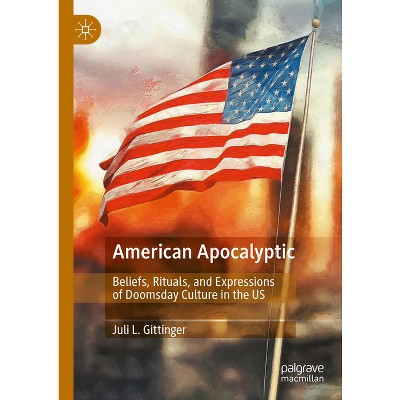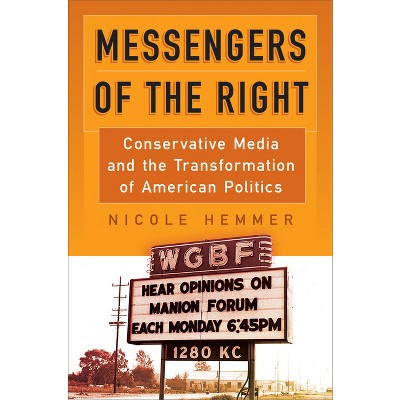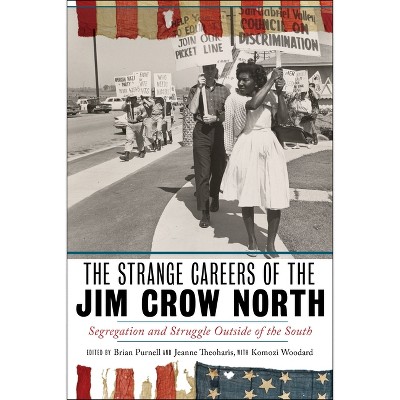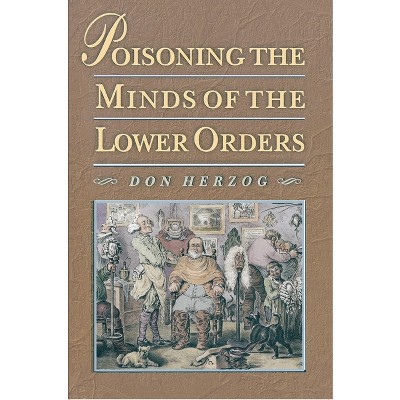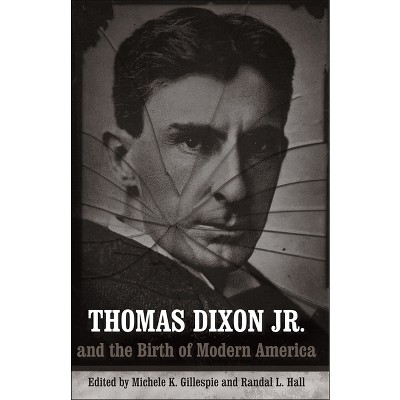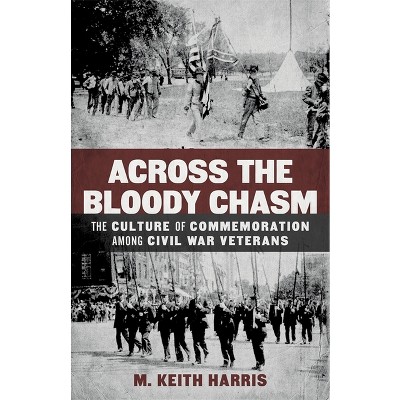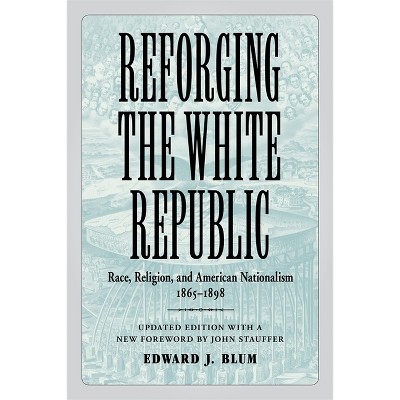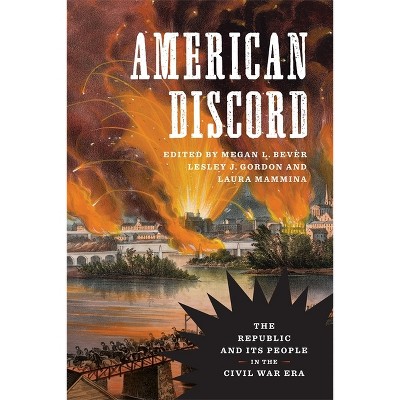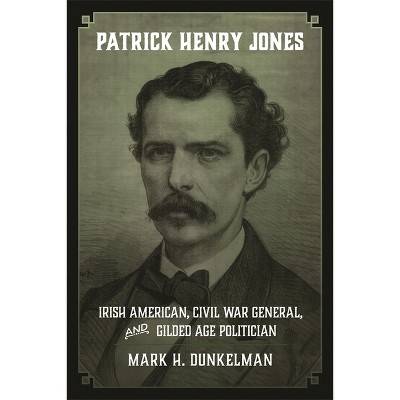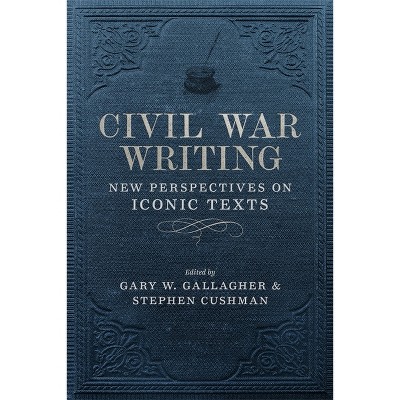Bloody Flag of Anarchy - (Conflicting Worlds: New Dimensions of the American Civil War) by Brian C Neumann (Hardcover)

About this item
Highlights
- Generations of scholars have debated why the Union collapsed and descended into civil war in the spring of 1861.
- About the Author: Brian C. Neumann is managing director and digital historian of the John L. Nau III Center for Civil War History at the University of Virginia.
- 230 Pages
- History, United States
- Series Name: Conflicting Worlds: New Dimensions of the American Civil War
Description
About the Book
"Generations of scholars have debated why the Union collapsed in 1860-61. "Bloody Flag of Anarchy" instead turns this question on its head, asking how the fragile Union held together for so long. It grapples with this question by reexamining the nullification crisis, one of the greatest political conflicts of the antebellum era. The country, it reveals, came perilously close to civil war during the winter of 1832-33. Twenty-five thousand South Carolinians volunteered to defend the state against federal "tyranny," while President Andrew Jackson vowed to march 200,000 troops into the state to crush the incipient rebellion. Although South Carolina's radical Nullifiers claimed to speak for all "true Carolinians," the Palmetto state was bitterly divided. Forty percent of voters rejected nullification, and roughly 9,000 men volunteered to fight against their fellow South Carolinians to hold the Union together. "Bloody Flag of Anarchy" examines the hopes, anxieties, and ideals of these Union men. It argues that they viewed the Union as the "last hope of liberty" in a world dominated by despotism-as a bold yet fragile testament to humanity's capacity for self-government. They believed that the Union preserved both liberty and slavery, ensuring peace, property, and prosperity for all white men. Nullification, they feared, would provoke social and political chaos: shattering the Union, tearing the social order, and inciting an apocalyptic racial war. For some readers, this book will serve as an introduction to the nullification crisis, a pivotal yet largely forgotten moment in American history. It will also appeal to specialists in many fields of nineteenth-century American history. It reframes the nullification crisis, providing fresh insight by focusing on the internal divisions within South Carolina rather than the tension between South Carolina and the federal government. It builds on the work of Gary W. Gallagher and others who study Civil War-era Unionism by investigating what the Union meant to Americans in the Jacksonian era. It also serves as a valuable resource for historians of gender, as I foreground the ways both parties deployed conceptions of manhood to mobilize their voters. Many Union men, it reveals, pushed back against nullification by appealing to moderate manhood, insisting that "true men" would protect their families from the horrors of disunion. Finally, scholars of transatlantic history will benefit from the book's analysis of the connections between nullification and the European revolutions of 1830. Union men, it contends, viewed the nullification crisis against the backdrop of global history, and they feared America might fail at the very moment the world needed its example the most"--Book Synopsis
Generations of scholars have debated why the Union collapsed and descended into civil war in the spring of 1861. Turning this question on its head, Brian C. Neumann's Bloody Flag of Anarchy asks how the fragile Union held together for so long. This fascinating study grapples with this dilemma by reexamining the nullification crisis, one of the greatest political debates of the antebellum era, when the country came perilously close to armed conflict in the winter of 1832-33 after South Carolina declared two tariffs null and void. Enraged by rising taxes and the specter of emancipation, 25,000 South Carolinians volunteered to defend the state against the perceived tyranny of the federal government. Although these radical Nullifiers claimed to speak for all Carolinians, the impasse left the Palmetto State bitterly divided. Forty percent of the state's voters opposed nullification, and roughly 9,000 men volunteered to fight against their fellow South Carolinians to hold the Union together.
Bloody Flag of Anarchy examines the hopes, fears, and ideals of these Union men, who viewed the nation as the last hope of liberty in a world dominated by despotism--a bold yet fragile testament to humanity's capacity for self-government. They believed that the Union should preserve both liberty and slavery, ensuring peace, property, and prosperity for all white men. Nullification, they feared, would provoke social and political chaos, shattering the Union, destroying the social order, and inciting an apocalyptic racial war. By reframing the nullification crisis, Neumann provides fresh insight into the internal divisions within South Carolina, illuminating a facet of the conflict that has long gone underappreciated. He reveals what the Union meant to Americans in the Jacksonian era and explores the ways both factions deployed conceptions of manhood to mobilize supporters. Nullifiers attacked their opponents as timid "submission men" too cowardly to defend their freedom. Many Unionists pushed back by insisting that "true men" respected the law and shielded their families from the horrors of disunion. Viewing the nullification crisis against the backdrop of global events, they feared that America might fail when the world, witnessing turmoil across Europe and the Caribbean, needed its example the most. By closely examining how the nation avoided a ruinous civil war in the early 1830s, Bloody Flag of Anarchy sheds new light on why America failed three decades later to avoid a similar fate.Review Quotes
"Compared to the secession movement of 1860-1861, South Carolina's nullification campaign has attracted relatively little historical interest. Brian C. Neumann's Bloody Flag of Anarchy breathes new life into the topic by placing it in fresh and illuminating frameworks. . . . It vividly conveys the intense human drama of this charged moment when South Carolinians believed they held in their hands not just the future of U.S. slavery but also the success of the Union and, perhaps, the fate of liberty across the globe."--Journal of American History
"Thoroughly researched, cogently argued, and eminently accessible in its prose, Brian C. Neumann's Bloody Flag of Anarchy sheds light on the complex dynamics of antebellum nullification, Unionism, and sectionalism. This book offers an analysis that will engage scholars of the Civil War era. It will also engross a broader audience seeking to better understand these dynamics during that historical period, as well as their continued relevance to the comparably contentious present."--Journal of Southern History
About the Author
Brian C. Neumann is managing director and digital historian of the John L. Nau III Center for Civil War History at the University of Virginia.
